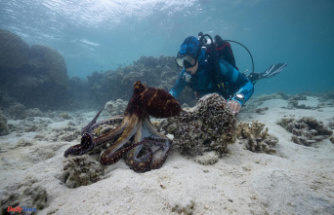you have spread out this year in large quantities much earlier than usual in the Baltic sea and are particularly large: jellyfish. "This is a very good jellyfish year," said biological oceanographer Cornelia Jaspers, the German press Agency. "Three weeks ago we have observed, especially in eckernförde, a very dense volume on the ears, jellyfish Bay, occasional jellyfish and invasive ctenophores." The latter appeared here, usually in the late summer of this year but already in may.
"In the Winter is very poured a lot of salt-rich water from the North sea and the Kattegat in the South-Western Baltic sea," said Jaspers, who works for the Geomar Helmholtz centre for ocean research in Kiel and the Technical University in Copenhagen. The high salt content have obviously led to the strong emergence of the jellyfish, which had been observed in 2006 for the first time in these regions. "In the case of low salt content, the jellyfish Mnemiopsis leidyi is not to reproduce the German sea walnut,." This jellyfish is not poisonous and thus harmless to humans – but it eats local fish food.
in Addition, the warm Winter had encouraged the existence of the Ribs and also the domestic ears, jellyfish, said Jaspers. Instead of two to three degrees in the last 40 years – was the water, this time to the five degrees warm. Because jellyfish also eat drifting organisms (Zooplankton), you can also contribute to oxygen loss. This invasive Ctenophore was gone for three years, from 2011 to 2013, after severe winters, the Baltic sea and, in 2014, after a very mild Winter, come back, with the salt water from the North sea.
Date Of Update: 22 July 2020, 08:20











